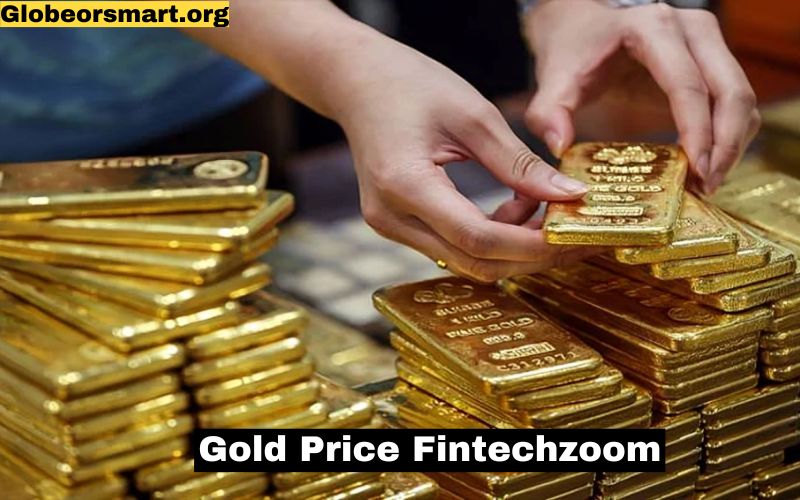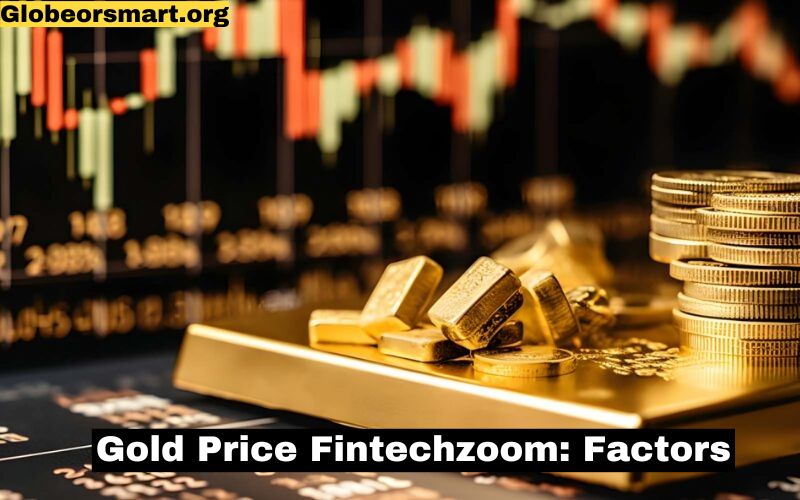Bitcoin(BTC)$89,736.00-1.95%
Ethereum(ETH)$3,088.60-3.18%
Tether(USDT)$1.00-0.04%
XRP(XRP)$2.09-5.83%
BNB(BNB)$883.05-1.79%
Solana(SOL)$134.00-2.22%
USDC(USDC)$1.000.03%
TRON(TRX)$0.2959490.09%
 Lido Staked Ether(STETH)$3,086.71-3.30%
Lido Staked Ether(STETH)$3,086.71-3.30%Dogecoin(DOGE)$0.139481-4.76%

Gold Price Fintechzoom: A Comprehensive Guide
Gold has been a symbol of wealth and a reliable store of value for centuries. In modern times, the value of gold continues to be a focal point for investors, central banks, and governments around the world. Understanding gold prices and their fluctuations is critical for anyone interested in investing in precious metals or tracking economic trends. This article delves into the intricacies of gold pricing, its historical significance, and how platforms like FintechZoom provide real-time insights into gold markets.
The Historical Significance of Gold
Gold as a Store of Value
Gold has been regarded as a store of value since ancient civilizations. The Egyptians, Romans, and Greeks all revered gold for its rarity and beauty. Unlike paper currency, gold does not corrode, tarnish, or deteriorate over time, which makes it an ideal medium for long-term wealth storage. Throughout history, gold has maintained its intrinsic value, acting as a hedge against inflation and currency devaluation.
The Gold Standard
The gold standard was a system where the value of a country’s currency was directly linked to a specific amount of gold. This system dominated global economies in the 19th and early 20th centuries, providing stability in international trade and investment. The abandonment of the gold standard in the 20th century, especially with the Bretton Woods Agreement in 1944 and later the Nixon Shock in 1971, marked a significant shift in the global monetary system. Today, gold still holds immense value, even though currencies are no longer backed by it.
Factors Influencing Gold Prices

Supply and Demand
Like any other commodity, the price of gold is influenced by supply and demand dynamics. The limited availability of gold, combined with its extensive use in jewelry, technology, and finance, ensures that demand often exceeds supply. When demand increases, such as during times of economic uncertainty, gold prices tend to rise.
Economic Indicators
Several economic indicators influence gold prices, including inflation rates, interest rates, and currency fluctuations. For instance, when inflation rises, the purchasing power of money decreases, leading investors to seek refuge in gold. Similarly, lower interest rates reduce the opportunity cost of holding gold, making it more attractive to investors.
Geopolitical Events
Gold is often seen as a haven asset during geopolitical crises. Events such as wars, political instability, and economic sanctions can lead to a surge in gold prices as investors seek security in tangible assets. The uncertainty surrounding such events often drives investors to buy gold, thereby increasing its price.
Central Bank Policies
Central banks play a crucial role in the gold market. Many central banks hold significant reserves of gold and can influence its price through their buying and selling activities. Additionally, central bank policies on interest rates and currency valuations can indirectly impact gold prices. For example, when central banks engage in quantitative easing or other expansionary monetary policies, gold prices tend to rise due to fears of inflation and currency depreciation.
Gold Price Trends Over the Years
Historical Price Movements
Gold prices have experienced significant fluctuations over the years. In the 1970s, gold prices soared due to high inflation and economic instability. The price of gold peaked in 1980 at around $850 per ounce, which was an unprecedented high at the time. After a period of decline in the 1980s and 1990s, gold prices began to rise again in the 2000s, driven by factors such as the 2008 financial crisis and increasing demand from emerging markets.
Recent Trends
In recent years, gold prices have continued to demonstrate volatility. The COVID-19 pandemic in 2020 led to a surge in gold prices, with the metal reaching an all-time high of over $2,070 per ounce in August 2020. This spike was driven by global economic uncertainty, massive fiscal stimulus, and ultra-low interest rates. While gold prices have since retreated from these highs, they remain elevated compared to pre-pandemic levels, reflecting ongoing concerns about inflation and economic recovery.
Future Projections
The future of gold prices remains uncertain, as it depends on a multitude of factors, including global economic conditions, central bank policies, and geopolitical events. Some analysts predict that gold prices could continue to rise in the coming years due to persistent inflationary pressures and geopolitical tensions. However, others caution that a strong economic recovery and rising interest rates could put downward pressure on gold prices.
FintechZoom and Real-Time Gold Price Tracking
What is FintechZoom?
FintechZoom is a leading financial technology platform that provides real-time data, analysis, and insights on various financial markets, including gold. The platform is widely used by investors, traders, and financial professionals to track market trends, analyze price movements, and make informed investment decisions. FintechZoom offers a range of tools and resources, including live charts, historical data, and expert analysis, making it an invaluable resource for anyone interested in gold prices.
Features of FintechZoom for Gold Tracking
Real-Time Price Updates
One of the key features of FintechZoom is its real-time price updates. Users can track the price of gold as it fluctuates throughout the trading day, ensuring they have the most up-to-date information at their fingertips. This is particularly important for traders who need to make quick decisions based on market movements.
Historical Price Data
FintechZoom also provides access to historical price data, allowing users to analyze long-term trends and patterns in the gold market. By examining historical data, investors can identify potential opportunities and risks, as well as gain a deeper understanding of how gold prices react to different economic and geopolitical events.
Interactive Charts
The platform offers interactive charts that enable users to visualize gold price movements over various timeframes, from minutes to decades. These charts are customizable, allowing users to apply technical indicators, draw trend lines, and compare gold prices with other assets. This feature is particularly useful for technical analysts who rely on chart patterns to predict future price movements.
News and Analysis
FintechZoom aggregates news and analysis from a wide range of sources, providing users with a comprehensive overview of the factors driving gold prices. Whether it’s a report on central bank policy, an analysis of economic data, or a geopolitical update, FintechZoom ensures that users are well-informed about the latest developments in the gold market.
Alerts and Notifications
For those who want to stay on top of market movements, FintechZoom offers customizable alerts and notifications. Users can set price thresholds, technical indicators, or news keywords, and receive instant alerts when their criteria are met. This feature is especially useful for active traders who need to respond quickly to market changes.
The Role of Gold in a Diversified Portfolio
Why Invest in Gold?
Gold is often considered a haven asset, providing a hedge against inflation, currency depreciation, and economic uncertainty. Unlike stocks or bonds, gold does not generate income or dividends, but it has historically maintained its value over time. For this reason, many investors include gold in their portfolios as a way to diversify and reduce risk.
Gold vs. Other Investments
Compared to other investments, gold has unique characteristics that make it an attractive option for certain investors. For example, gold tends to perform well during periods of high inflation, while stocks and bonds may suffer. Additionally, gold is negatively correlated with the US dollar, meaning that when the dollar weakens, gold prices typically rise. This makes gold a useful tool for hedging against currency risk.
How Much Gold Should You Own?
The amount of gold to include in a portfolio depends on an individual’s risk tolerance, investment goals, and market outlook. Financial advisors often recommend allocating between 5% to 10% of a portfolio to gold or other precious metals. This allocation can provide a buffer against market volatility while still allowing for growth in other asset classes.
Gold Investment Options
There are several ways to invest in gold, each with its own advantages and disadvantages:
Physical Gold
Investors can purchase physical gold in the form of bars, coins, or jewelry. While owning physical gold provides a tangible asset, it also requires secure storage and insurance. Additionally, physical gold may be less liquid than other forms of investment.
Gold ETFs
Gold exchange-traded funds (ETFs) offer a convenient way to invest in gold without the need to buy and store physical gold. These funds track the price of gold and can be traded on major stock exchanges. Gold ETFs are highly liquid and offer low transaction costs, making them a popular choice for investors.
Gold Mining Stocks
Investing in gold mining stocks provides exposure to the gold market through companies involved in gold exploration, mining, and production. These stocks can offer higher returns than physical gold or ETFs, but they also come with higher risk due to factors such as operational challenges and fluctuations in mining output.
Gold Futures and Options
Gold futures and options allow investors to speculate on the future price of gold. These derivatives can offer significant leverage, but they also carry a high level of risk and are typically only suitable for experienced traders.
The Future of Gold in the Digital Age
The Impact of Technology on Gold Trading
The rise of financial technology has transformed the way investors buy, sell, and trade gold. Platforms like FintechZoom have made it easier than ever to access real-time market data, execute trades, and manage investments. Additionally, the development of blockchain technology and digital assets has the potential to further disrupt the gold market by enabling more efficient and transparent transactions.
Digital Gold
Digital gold is an emerging concept that combines the stability of gold with the convenience of digital currencies. Companies like Paxos and Digix have created digital tokens backed by physical gold, allowing investors to trade gold on blockchain platforms. These tokens can be easily transferred, traded, and stored, offering a modern alternative to traditional gold investments.
The Role of Gold in a Digital Economy
As the global economy becomes increasingly digital, the role of gold may evolve. While physical gold will likely remain a valuable asset, digital gold, and other innovations could offer new ways to invest in and utilize gold. For example, central banks could explore the use of digital gold reserves in their monetary policies, or individuals could use gold-backed digital currencies for everyday transactions.
Visit Also: FintechZoom Apple Stock
Conclusion
Gold has played a pivotal role in the global economy for centuries, and its significance is unlikely to diminish anytime soon. Whether as a store of value, a hedge against economic uncertainty, or a component of a diversified investment portfolio, gold remains a critical asset for investors around the world. Platforms like FintechZoom provide valuable tools and insights for tracking gold prices and making informed investment decisions. As technology continues to reshape the financial landscape, how we invest in and interact with gold are likely to evolve, offering new opportunities and challenges for investors.
Understanding gold prices and the factors that influence them is essential for anyone looking to invest in this precious metal. By staying informed and leveraging the resources available on platforms like FintechZoom, investors can navigate the complexities of the gold market and make decisions that align with their financial goals. Whether you’re a seasoned investor or just starting, gold offers a timeless and valuable addition to any investment strategy.